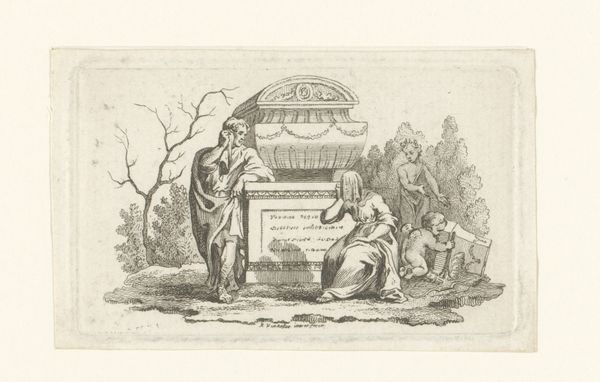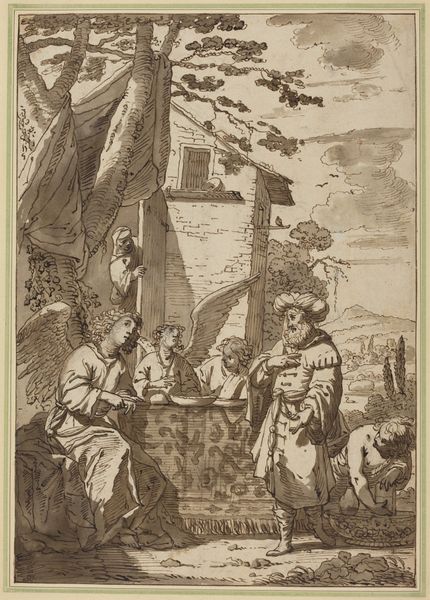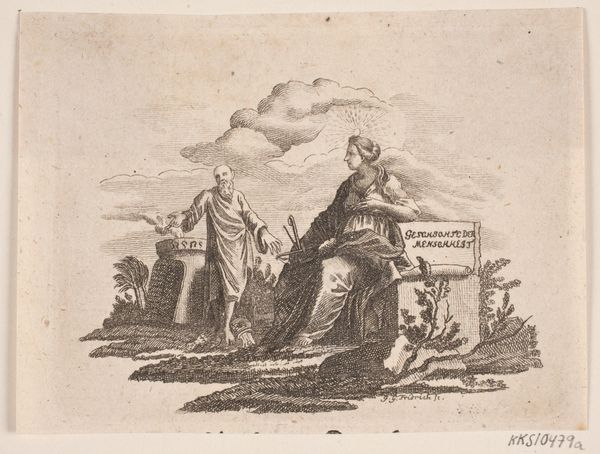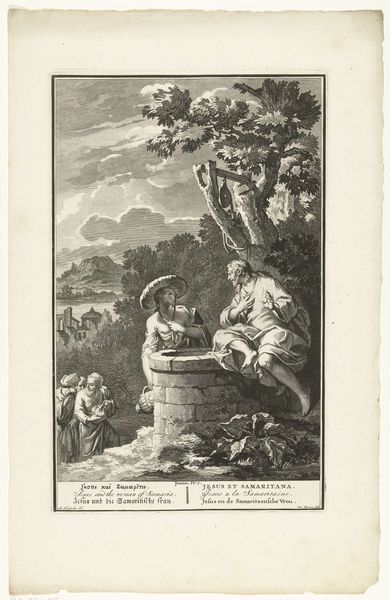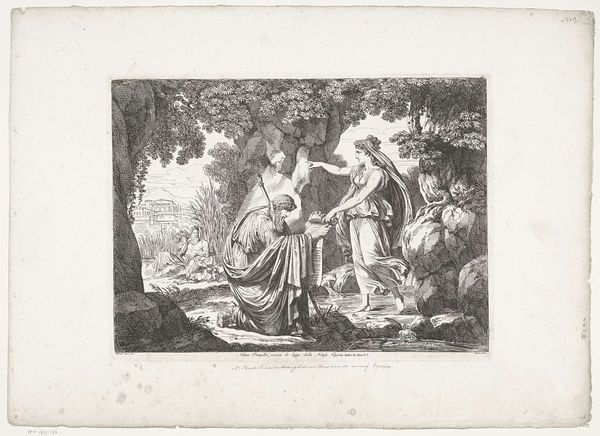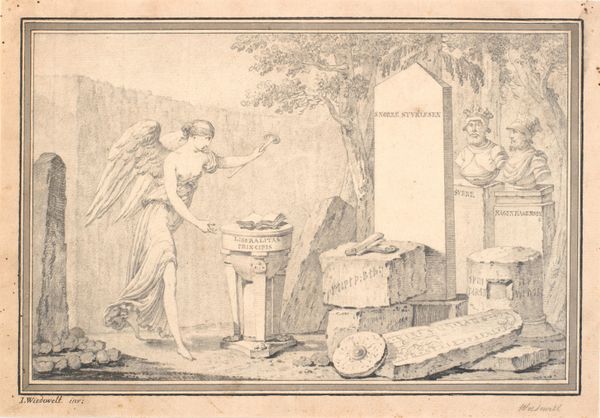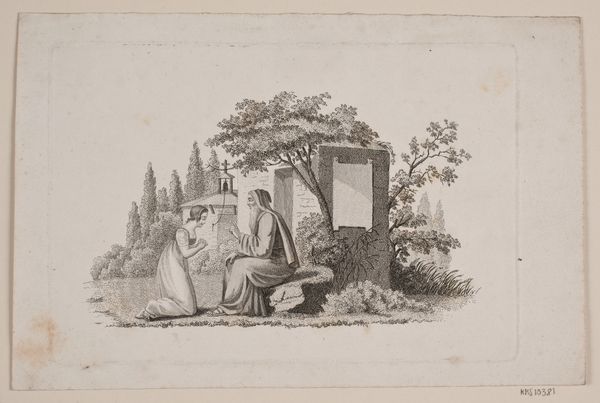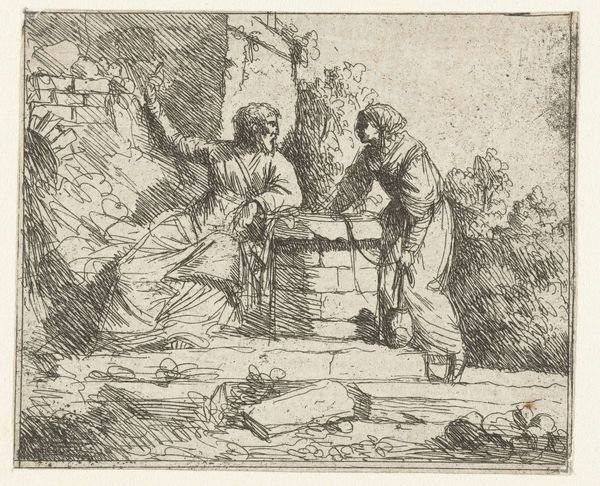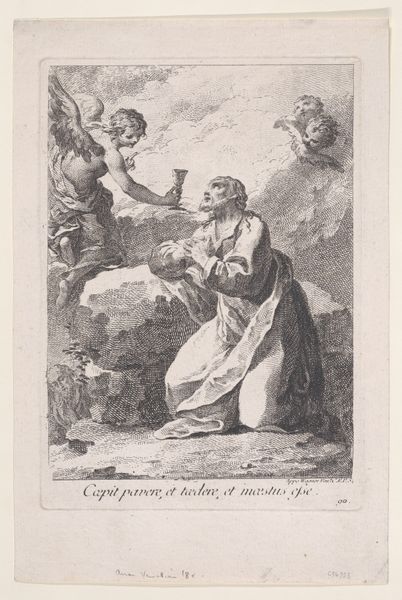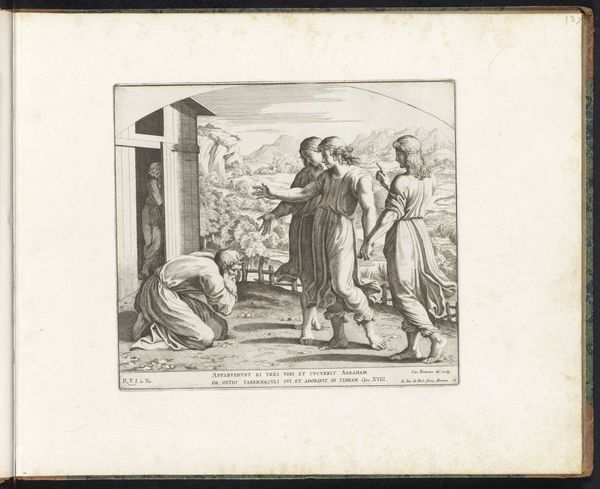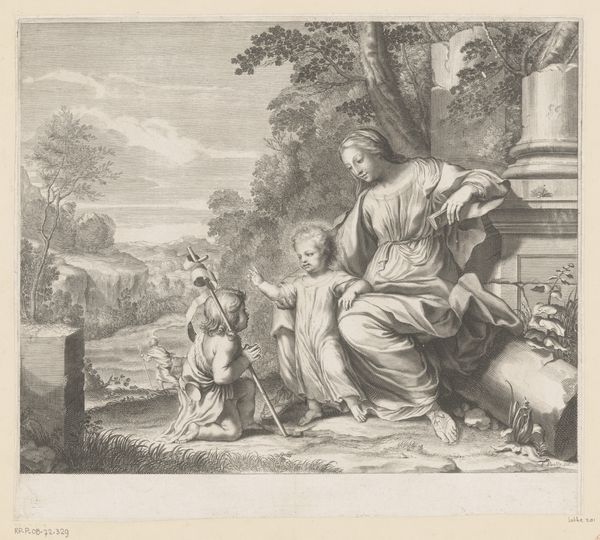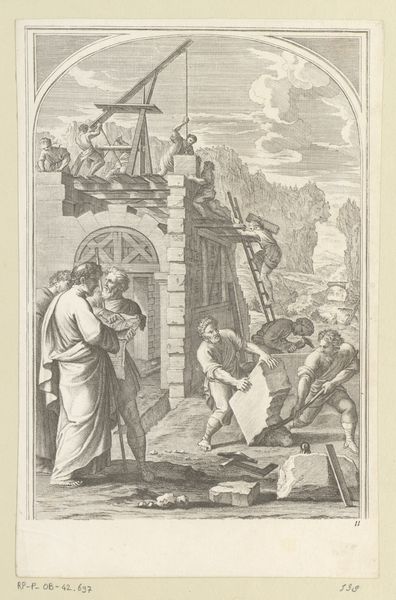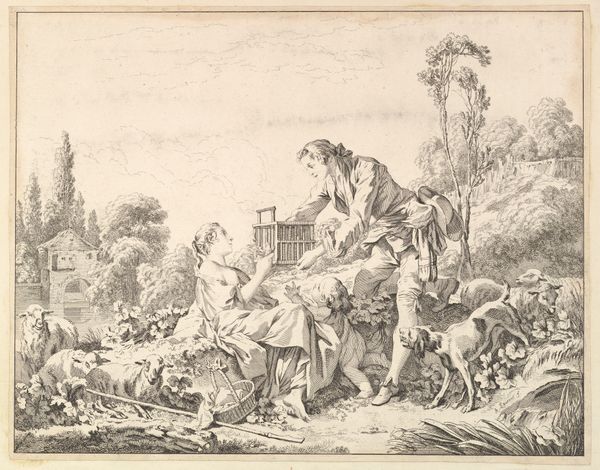
Vignet til H. Niemeyer "Bibelske Charakteristik" 1742 - 1809
0:00
0:00
Dimensions: 76 mm (height) x 100 mm (width) (bladmaal)
Curator: Here we have a piece entitled "Vignet til H. Niemeyer 'Bibelske Charakteristik,'" a print combining etching and engraving. It was created sometime between 1742 and 1809 by Johann Gottlieb Friedrich. It resides here at the SMK, the National Gallery of Denmark. Editor: The scene feels heavy, allegorical in the Baroque manner. Everything seems staged. It looks as if morality is being pondered in some verdant glade… or is that just wishful thinking? Curator: The artist clearly wanted to imbue the image with some gravitas. There's a figure of a woman gazing at a huge book. Above her head shines a halo-like sunburst. Then you've got discarded theater masks at her feet and an almost playful figure of a boy to the left. It is like a morality play distilled onto a very small piece of paper. Editor: The contrast is interesting. A weighty stone book, seemingly titled "BIBLIA" in Latin, the masks suggestive of pretense or past roles abandoned… It feels like it's about embracing solemnity and truth perhaps? The boy on the other hand feels more free from these heavy considerations. I wonder if the image might suggest there is room for both seriousness and simple pleasure? Curator: Given the period and likely its commission for H. Niemeyer’s book, it speaks volumes about the role and reception of Biblical scholarship. The "Biblia" inscription presented like an eternal stone monument speaks of faith's central role within society. It's hard to overlook the power dynamics inherent in art production at the time. The artwork serves to uphold particular ideals. Editor: True, the composition itself props up an establishment view – even the etching style feels tied to history and power. It has an official and instructive vibe to it. Though it still strikes me with an ambiguous message. Perhaps because those cherubic and theatrical figures offer an antidote to the work's dominant mood, I still believe there is something more playful going on than an austere and monumental proclamation. Curator: Yes, those secondary figures bring their own narratives to the surface. Maybe it captures faith itself undergoing a kind of Baroque transformation... The artwork offers a unique snapshot of a historical artifact viewed through a shifting lens. Editor: In short, while being framed with historical importance, there is room for one to make up their own meaning when diving deeper in this composition, to me that is an interesting and unexpected part of this artwork.
Comments
No comments
Be the first to comment and join the conversation on the ultimate creative platform.
